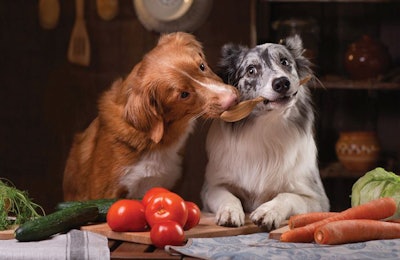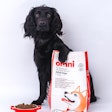
Dry kibble remains the most frequently bought dog and cat food, but pet owners’ choice of that format may be driven by price and presence in stores more than preference. During her presentation at Petfood Forum 2021, Stephanie Wissink, senior research analyst and managing director for financial services firm Jefferies, shared data on pet food preferences that her team collected in a survey of 1,450 pet owners in the United States.
Of those survey respondents, 81% reported using dry kibble pet foods, while 50% used wet or canned varieties. Seventeen percent bought fresh pet food while 9% purchased raw. However, when asked which products they would buy if cost and availability were not a factor, those numbers shifted. Kibble dropped to 36% and wet to 21%. However, 34% of respondents would buy fresh and 7% raw, if money was no object and the products were readily available.
Relative price hinders fresh pet food sales
“One of the key takeaways here is that in regard to fresh, if cost were not a factor, the proportion of fresh would be much higher, nearly doubling the current penetration level and pushing to over one third of pet households,” Wissink said.
Price was the primary block to fresh pet food purchasing. Forty-four percent of survey respondents stated that they didn’t buy fresh because it was too expensive. Meanwhile, 16% simply didn’t want to switch, and 14% said it was harder to store or serve. Thirteen percent stated they believed it was not as healthy.
“Fresh demand is nearly two times the offer, but cost is the primary hurdle for consumers to purchase more fresh,” she said.
While price may hinder fresh pet food sales growth, cost wasn’t the most important factor pet owners considered when choosing a brand. Overall, 47% of dog and cat owners in the survey chose their pet food based on nutrition and health factors, while 16% chose based on price.
Health and price also influenced survey respondents’ likelihood of switching brands. The survey asked U.S. pet owners about their motivations for switching brands. Price (22%), health claims (23%) and vet recommendations (22%) were the top three, followed by pet preference at 16%.
“Price, health and vet recommendations are the three biggest factors,” she said. “So, if you’re pet food brands is trying to steal market share away from someone else, vets are the voice of authority in the industry, but also think about what you can do in terms of claims on your packaging, and how do you stand relatively in terms of value and price.”



















